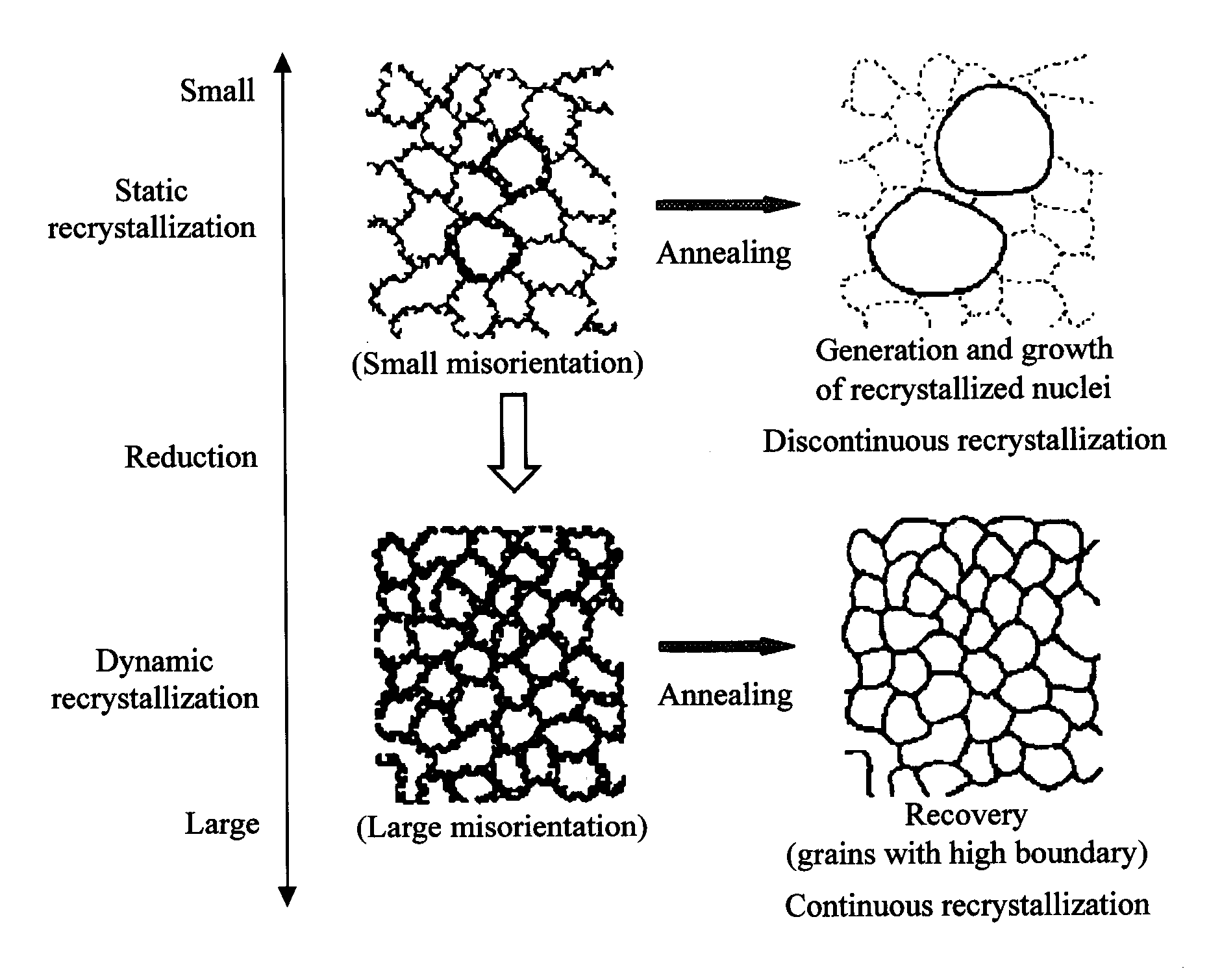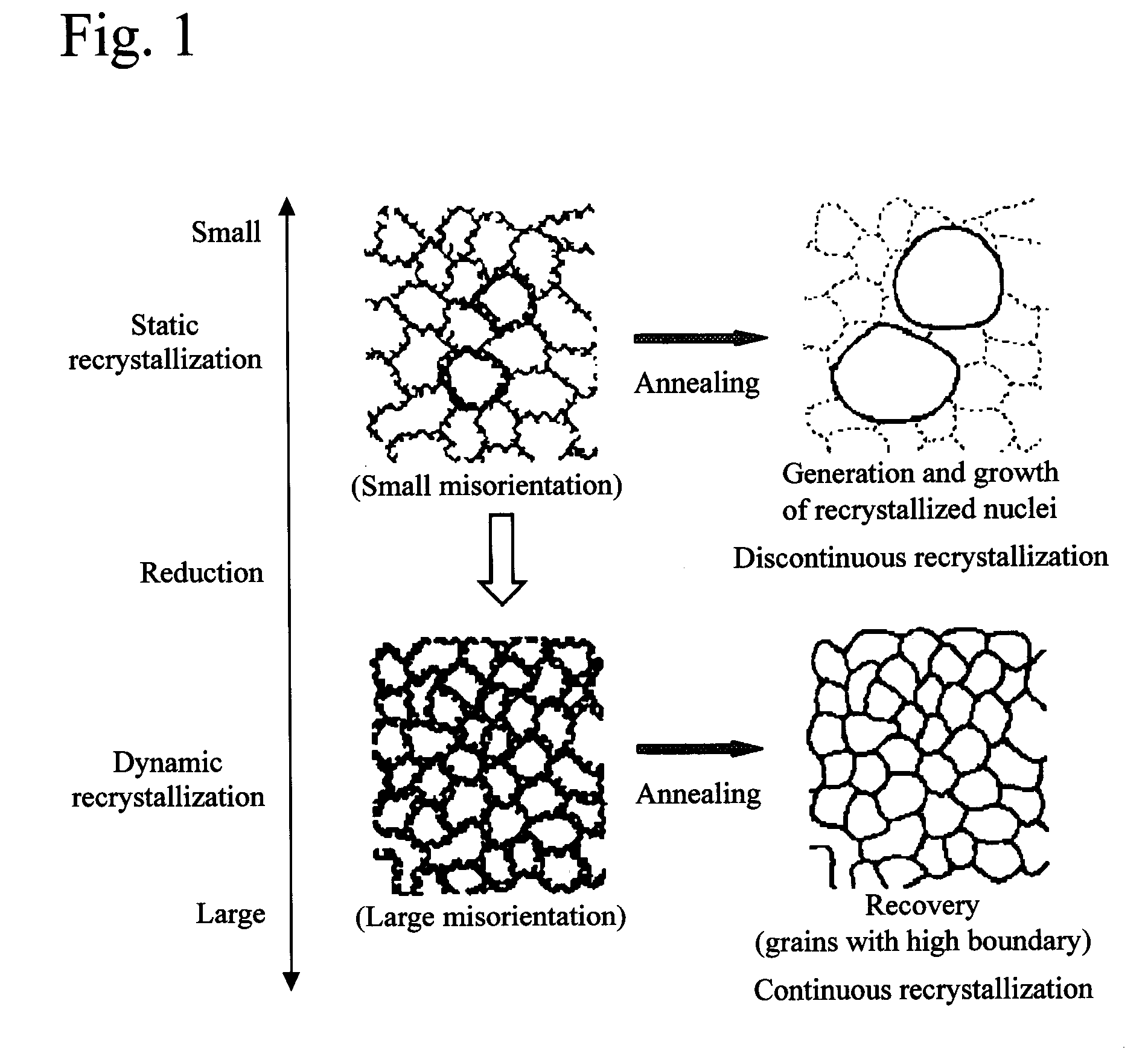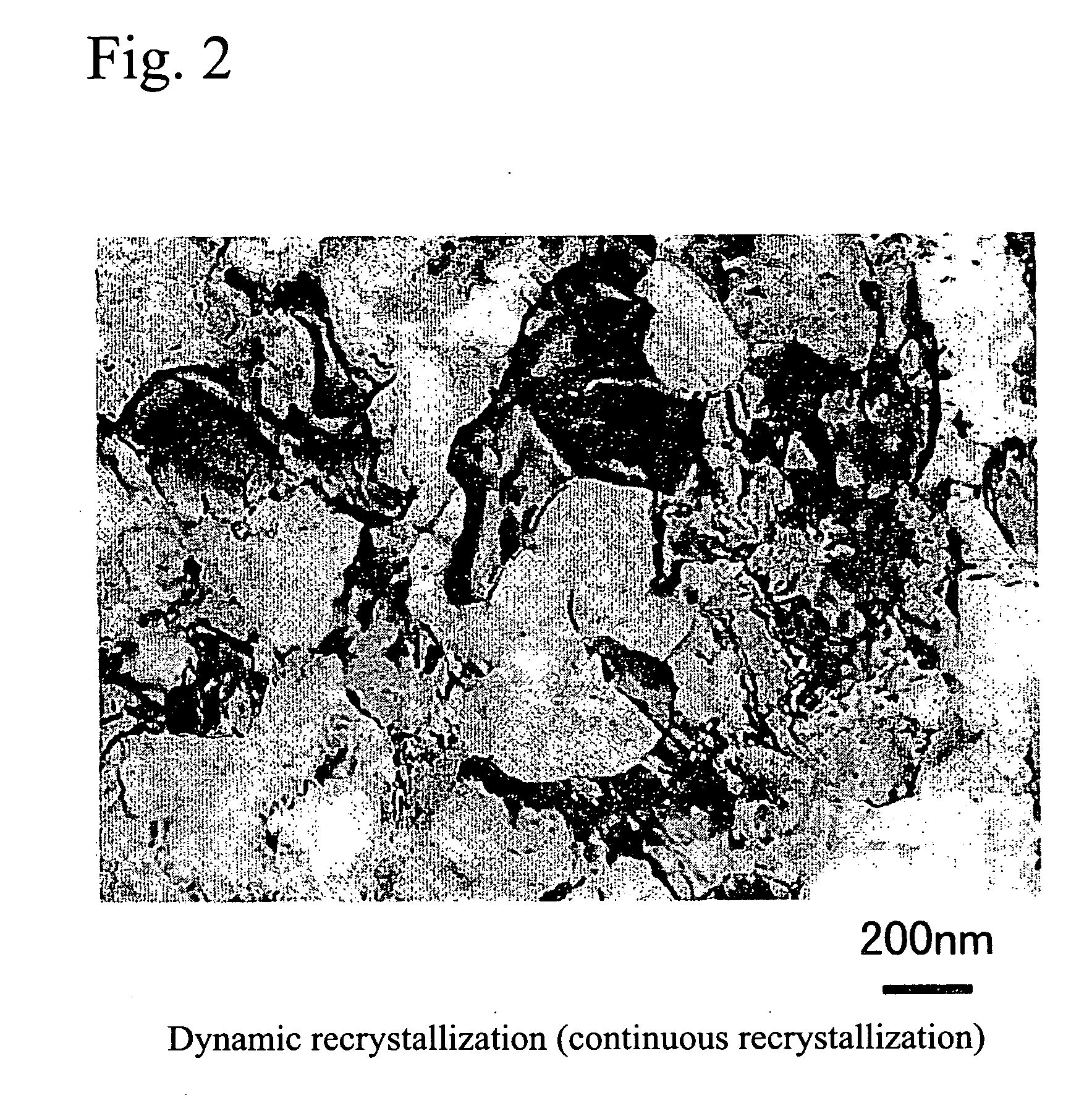Copper, copper alloy, and manufacturing method therefor
a manufacturing method and technology of copper alloy, applied in the direction of metal rolling arrangement, etc., can solve the problems of reduced ductility, low ductility, and ductility decline, and achieve the effect of enhanced ductility and preferable bending properties
- Summary
- Abstract
- Description
- Claims
- Application Information
AI Technical Summary
Benefits of technology
Problems solved by technology
Method used
Image
Examples
embodiments
[0028]Effects of the invention are more specifically described below by referring to preferred embodiments. First, using electric copper or oxygen-free copper as material, a specified amount of the material was put in a vacuum melting furnace, together with other additive elements, if necessary, and ingots of the chemical composition shown in Tables 1 to 3 were obtained by casting at the molten metal temperature of 1250° C. Table 1 shows the compositions of Cu—Ni—Si alloys, Table 2 shows the Cu—Cr—Zr alloys, and Table 3 shows other copper alloys.
TABLE 1Cu—Ni—Si alloyFinal Rolling ConditionOriginalFinalProduct PropertiesChemical compositionPlatePlateColdGrainTensileRuptureBendingConduc-Cu andThicknessThicknessRollingSizeStrengthElongationProper-tivityNiSiImpurities(mm)(mm)Reduction(μm)(MPa)(%)ties(% IACS)Example of13.020.67Balance3.300.153.10.208203.7◯48Invention22.750.59Balance3.800.153.20.158103.8◯5033.180.62Balance3.650.153.20.158304.5◯4943.300.70Balance3.400.153.10.208203.8◯4852....
PUM
| Property | Measurement | Unit |
|---|---|---|
| grain size | aaaaa | aaaaa |
| elongation | aaaaa | aaaaa |
| elongation | aaaaa | aaaaa |
Abstract
Description
Claims
Application Information
 Login to View More
Login to View More - R&D
- Intellectual Property
- Life Sciences
- Materials
- Tech Scout
- Unparalleled Data Quality
- Higher Quality Content
- 60% Fewer Hallucinations
Browse by: Latest US Patents, China's latest patents, Technical Efficacy Thesaurus, Application Domain, Technology Topic, Popular Technical Reports.
© 2025 PatSnap. All rights reserved.Legal|Privacy policy|Modern Slavery Act Transparency Statement|Sitemap|About US| Contact US: help@patsnap.com



